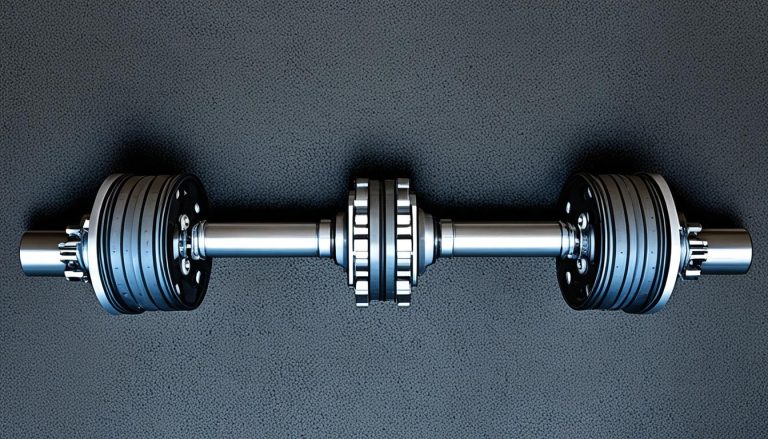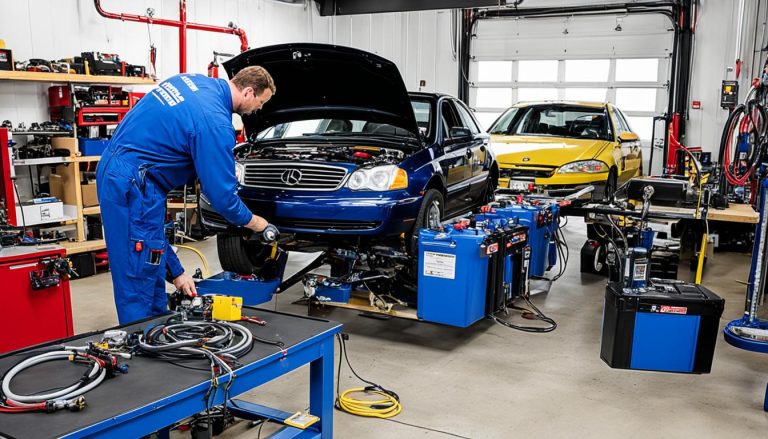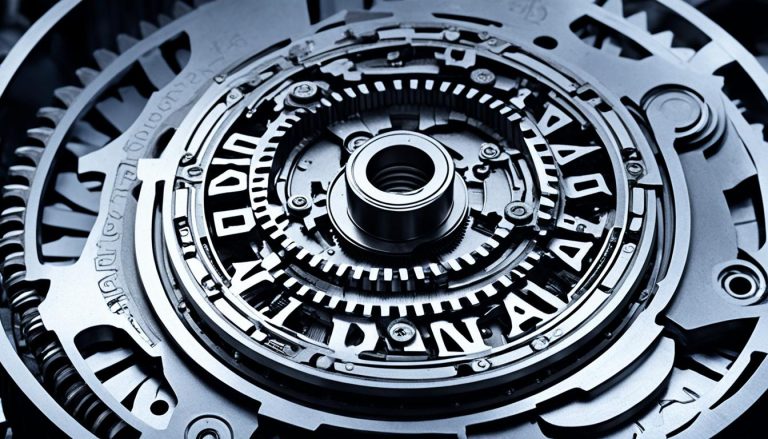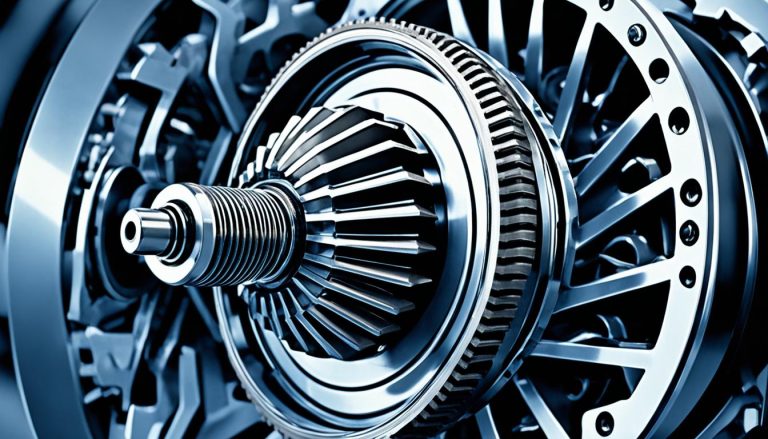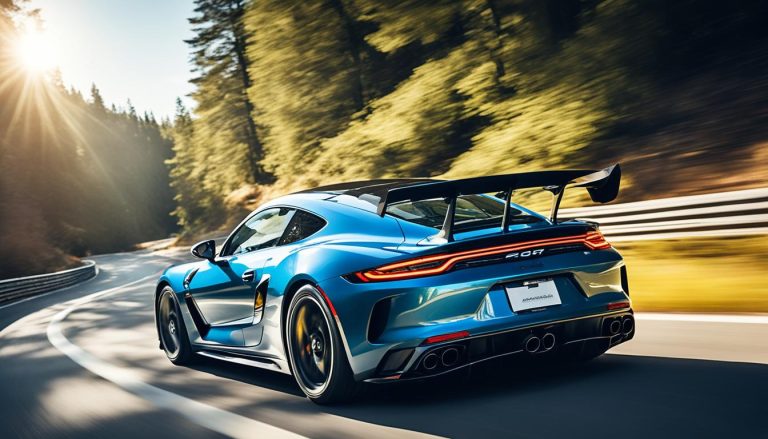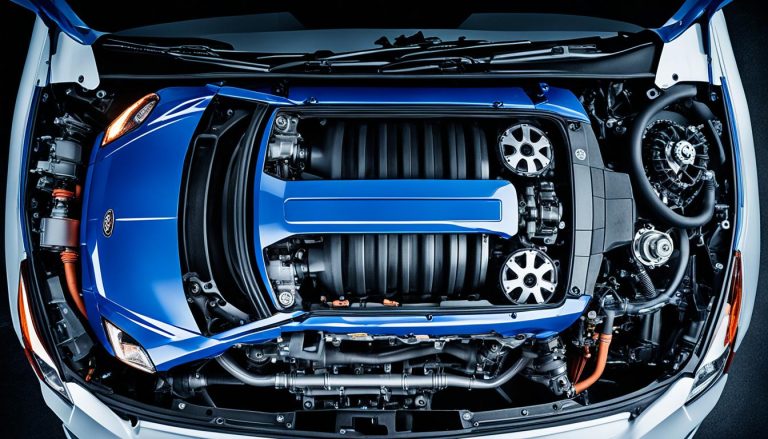Electronic Locking Rear Differential vs Limited Slip
When you’re crunching gravel under your tires or navigating a snow-laden trail, your vehicle’s differential—one of the unsung heroes beneath the chassis—determines not just your traction, but also your confidence in controlling your vehicle. In the world of mountain trails and rugged terrain, the electronic differential debate is a hot topic amongst off-road aficionados. Will the reliable 4×4 differential support you when the going gets tough, or is an off-road differential specifically engineered for the twists and hollows of the backcountry a necessity for your adventures?
You might find yourself weighing the pros and cons of an electronic locking rear differential against those of a limited slip variant. Each boasts its distinctive features: the former offering all-or-nothing lockdown grip for those precarious situations, and the latter providing a more nuanced, intelligent power distribution that’s also palpable during spirited highway driving. But it’s not just about getting unstuck—it’s about knowing your vehicle is equipped for the path ahead, no matter how unpredictable. So, let’s delve into the differential comparison to pinpoint exactly what type of differential types and traction control mechanisms align with your driving demands.
Key Takeaways
- Understanding differentials is critical for optimal vehicle performance and off-road prowess.
- Electronic locking rear differential provides maximum traction in extreme conditions.
- Limited Slip Differentials offer smart power allocation, enhancing grip during daily drives and performance scenarios.
- Making the right choice depends on your unique driving needs and off-road requirements.
- Differential maintenance should be part of your vehicle care routine for sustained durability and performance.
- While both types improve traction, the electronic locking differential tends to excel in relentless off-road environments.
Understanding Differentials: How They Impact Your Drive
When you turn a corner in your vehicle, have you ever wondered how your wheels can spin at different speeds yet move effectively? This mechanical marvel is thanks to the rear differential, a complex and crucial component that sits unnoticed by most drivers. In the scope of everyday driving, you rarely consider this part until you find yourself in situations calling for more grip—like when a patch of ice or mud reduces your vehicle traction.
For those times, some vehicles feature a differential lock. Picture yourself driving through a treacherous path—perhaps a rocky terrain during an off-road adventure—here the differential lock becomes your best ally. By ‘locking’ the differential, power is evenly split between the two wheels, maintaining momentum even when one starts spinning due to lack of traction. This feature, while not often used in city driving, can be a real game-changer under tough conditions.
Under mundane conditions, your rear differential quietly does its job, ensuring a smooth and stable ride. Whether you realize it or not, it is enhancing your vehicle traction on various surfaces, from slick rain-soaked streets to the gravelly backroads. The differential’s ability to adapt to different conditions makes it indispensable for everyday driving as well as for more extreme situations.
But how do different types of differentials stack up? Let’s break down the differences:
| Type | Operation | Benefit | Ideal Use |
|---|---|---|---|
| Open Differential | Permits wheels to rotate at different speeds | Simplicity and cost-effectiveness | Standard road conditions |
| Limited Slip Differential (LSD) | Allocates power to the wheel with more grip | Improved traction without manual intervention | Racing and spirited driving conditions |
| Locking Differential | Equalizes power distribution across both wheels | Maximum traction in off-road or slippery conditions | Off-roading and extreme weather |
Understanding the intricacies of differentials transcends technical knowledge—it empowers you to make informed decisions about your vehicle’s capacity and performance. Knowing when you might need a differential lock or the consistent handling offered by open differentials can ensure that your car is ready for any curve—literal or figurative—that comes your way.
Remember, whether it’s the seamless turns during a relaxing drive or conquering the rough terrain of your latest adventure, the differential is truly the unsung hero of your vehicle’s drivetrain system.
The Mechanics Behind Limited Slip Differentials
For car enthusiasts and everyday drivers alike, understanding the inner workings of limited slip differentials (LSD) is essential for optimizing vehicle performance. Whether you’re navigating through rain-slicked streets or taking tight corners with precision, the type of LSD your vehicle employs markedly influences its handling and stability.
Mechanical LSDs are all about the grip—they lock wheels upon acceleration or deceleration using a multi-plate clutch system. Traditional yet effective, these LSDs react mechanically to driving conditions to provide better traction.
Electronic LSDs, or eLSDs, on the other hand, bring technology into the mix. They adjust the differential lock through computer control, adapting dynamically to sensor data from the wheels. This advancement suits those looking for a modern approach to traction control.
For a smoother form of power distribution, there are viscous LSDs. They employ oil-immersed plates that transfer torque as a result of fluid movement when there’s a discrepancy in wheel speed. While viscous LSDs are quieter in operation, they don’t provide a full lock, limiting their torque transfer capability somewhat.
Then there are the Torsen and Helical LSDs, which utilize clever worm gears and provide a balance between noise reduction and low maintenance. However, it’s worth noting that their functionality is compromised if a wheel has no traction at all.
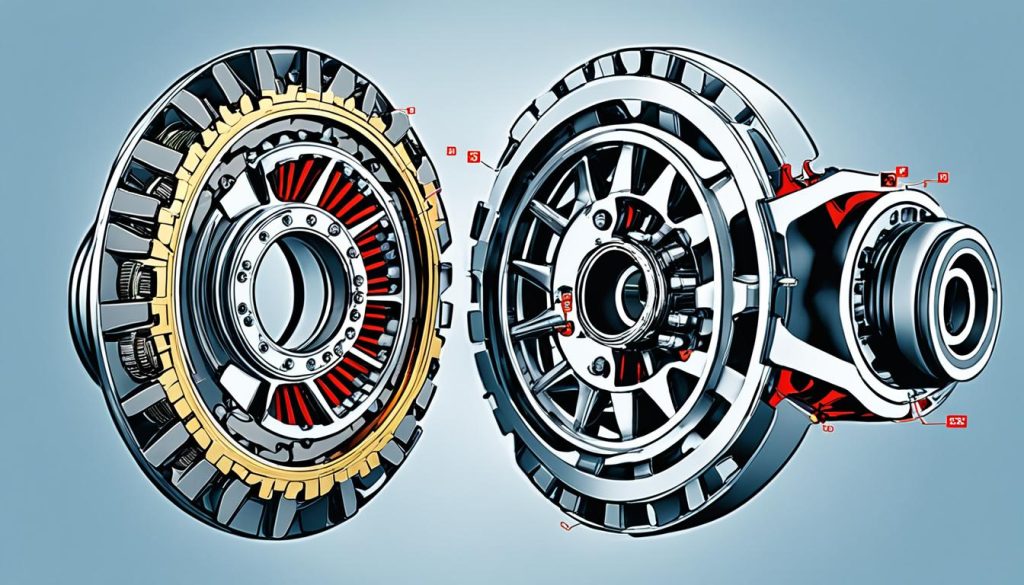
In table below, we outline the unique advantages of each LSD type to help you understand their applications and benefits:
| Type of LSD | Locking Mechanism | Maintenance | Noise Level | Suitability |
|---|---|---|---|---|
| Mechanical LSD | Multi-plate clutch system | Moderate | Moderate to Low | Performance driving, everyday use |
| Electronic LSD (eLSD) | Computer-controlled | Low | Low | Modern vehicles, situations requiring precise control |
| Viscous LSD | Fluid dynamics (oil-immersed plates) | Low | Low | Road vehicles, situations with minor traction differences |
| Torsen/Helical LSD | Worm gears | Low | Very Low | Vehicles needing quiet operation and less maintenance |
Recognizing the distinct characteristics of mechanical LSDs, electronic LSDs (eLSDs), viscous LSDs, Torsen LSDs, and Helical LSDs enables you to better gauge the differential that aligns with your driving style. Each one is engineered to optimize performance and enhance your driving experience in a tailored way.
Electronic Locking Rear Differential vs Limited Slip: Key Differences
When it comes to upgrading your vehicle’s capabilities, understanding the contrast between electronic locking rear differentials and limited slip differentials is pivotal. Both systems are designed to maximize wheel traction and improve handling under various driving conditions. Yet, their operational principles are fundamentally different, each with unique benefits that could sway your decision depending on your driving needs.
Before we delve deeper into the mechanics of each system, let’s visualize the key differences in a tabular comparison to see how they stack up against each other regarding durability, differential engagement, and internal differential torque management.
| Feature | Electronic Locking Rear Differential | Limited Slip Differential |
|---|---|---|
| Power Distribution | Equal power to both wheels | Variable power to either wheel |
| Engagement Method | Driver-controlled or automatic locking | Automatic engagement via clutch pack |
| Optimal Use Scenario | Off-road and low-traction environments | Mixed traction and on-road performance |
| Maintenance | Low | Medium (due to wear on clutch packs) |
| Impact on Tire Wear | May accelerate tire wear | Less impact on tire wear |
| Internal Torque Management | Locked torque transmission | Intelligent torque distribution |
Locking Differentials: Ensuring Equal Power Delivery
Locking differentials, commonly known as lockers, are lauded for their ability to deliver equal torque to both wheels on an axle. This feature is critical when traversing challenging off-road paths where even one tire with compromised traction could immobilize a vehicle. The differential engagement is straightforward: when the locker activates, it forbids differential wheel spin, transforming your axle into a single unit pushing through obstacles with ease.
Limited Slip Differentials: Intelligent Power Distribution
In contrast, limited slip differentials (LSD) boast of a clutch pack system that offers more nuanced power allocation. This intelligent power distribution is sensitive to the variations in traction that each wheel experiences, particularly during on-road driving scenarios. As one wheel begins to lose grip, the differential’s torque-sensing ability redirects power to the wheel with better traction, offering a blend of performance and composure.
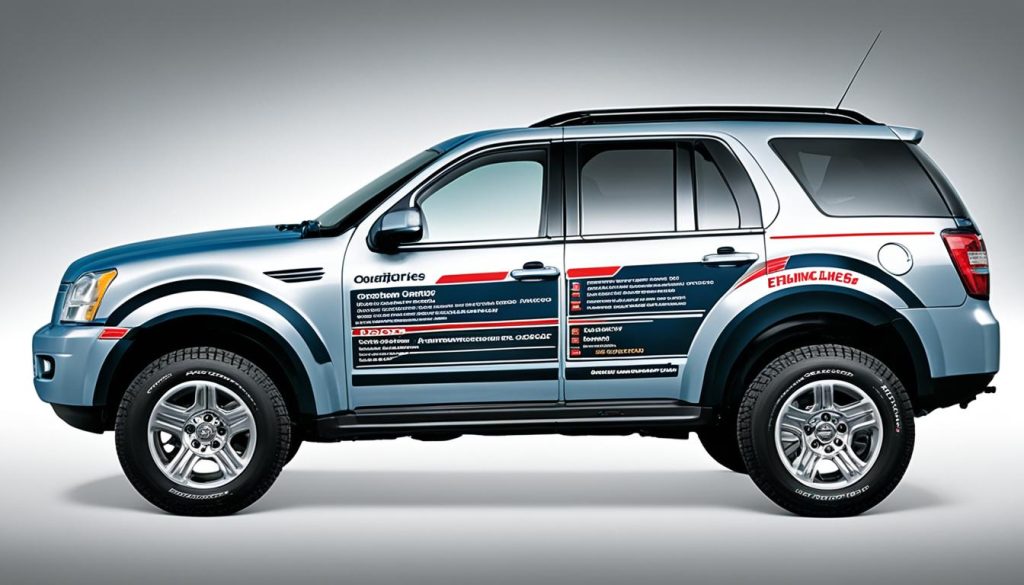
Ultimately, the choice between these two types of differentials will hinge on where you drive and the conditions you expect to encounter. Whether it’s the rugged reliability of a locker or the adaptive finesse of an LSD, equipping your vehicle with the right type of differential can significantly enhance your driving experience. Consider the table above as a baseline for making an informed decision that aligns with your vehicle’s demands and your adventures ahead.
Pros and Cons: Choosing The Right Differential for Your Vehicle
When you’re in pursuit of performance driving excellence, understanding the implications of your vehicle’s differential system is indispensable. Dependent on your off-roading requirements and the amount of traction enhancement you seek, the choice between an electronic locking rear differential and a limited slip differential (LSD) could significantly impact your driving experience.
With LSDs, the potential for a richer driving engagement is sizable, providing nuanced traction benefits that particularly shine during cornering or on variable traction surfaces. However, this technological sophistication may escalate differential maintenance demands and upfront cost—a necessary investment for drivers who prioritize vehicular agility and responsiveness.
In contrast, opting for a locking differential could enhance your vehicle’s reliability due to its reduced maintenance profile. It’s a robust ally in challenging off-road adventures, ensuring an equitable distribution of power to overcome obstinate impediments. Nonetheless, the possible trade-offs may include amplified tire wear and the auditory presence of the diff locking, nuances that may temper the joy of a smooth, on-road cruise.
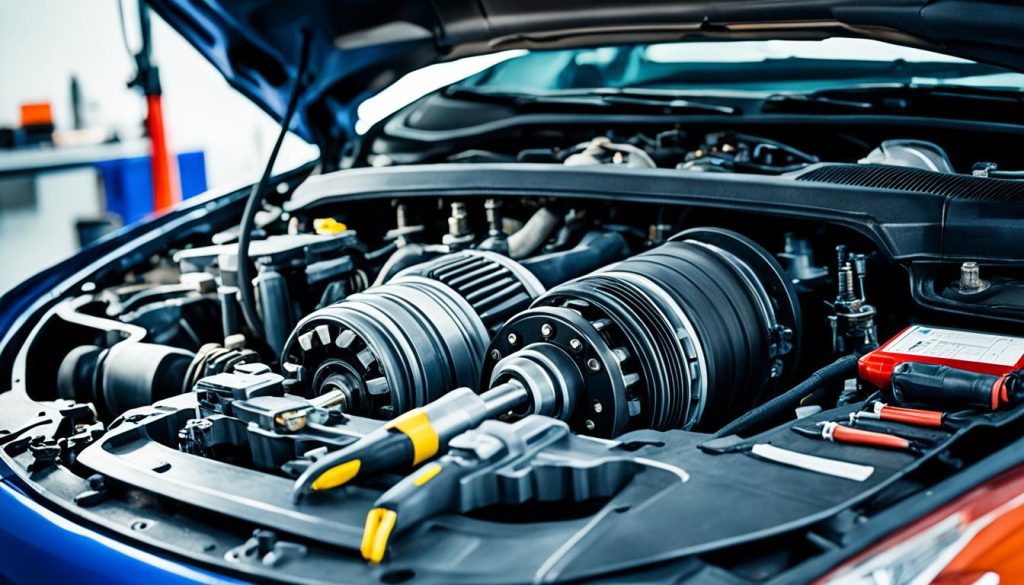
Ultimately, your decision should align with your driving habits and the specific challenges your vehicle will confront. To aid in this decision, consider the following comparison:
| Feature | Electronic Locking Rear Differential | Limited Slip Differential |
|---|---|---|
| Off-Road Capability | Superior in rugged terrain | Effective on mild off-road paths |
| On-Road Comfort | Can cause noisy engagement and increased tire wear | Quieter with less tire wear on pavement |
| Maintenance | Lower maintenance due to simpler design | May require more upkeep due to complexity |
| Traction Enhancement | Consistent power on both wheels in low-traction scenarios | Intelligent distribution of power to the wheel with the most grip |
| Cost | Generally lower upfront cost | May be more expensive due to specialized components |
By analyzing these aspects, you’re better equipped to make an informed selection that not only caters to your dynamic driving pursuits but also complements the technical requisites of your trusted vehicle.
Real-World Applications: When to Use Limited Slip vs Electronic Locking
Embarking on an off-road adventure or navigating the race track, the equipment beneath your vehicle is critical to conquering the challenges ahead. Understanding the role of your vehicle’s differential—be it a Limited Slip Differential (LSD) or an Electronic Locking Differential—ensures that you’ve got the right tool for the task, whether you seek optimal traction control or desire peak performance under high-power demands.
Off-Roading and Traction Control
Picture yourself amidst rugged landscapes that demand every ounce of your 4×4 capabilities. Here, the predictable becomes elusive, and traction control is paramount. LSDs adeptly manage wheel slippage by transferring power to the wheel with the most grip—enough to handle mild off-road conditions. But when faced with the most arduous terrain, where an off-road differential must perform under extreme duress, locking differentials give you the edge, ensuring an unyielding grip by delivering equal power to both wheels, a lifesaver when traction is scarce on all fronts.
Racing and Performance Driving
As the green light fades into a blur behind you, and you’re gripped by the intensity of the race, performance cars rely on the nuanced distribution of power that an LSD provides. Proven integral for racing, they ensure that driveline stress is mitigated, allowing swift and responsive handling that maximizes traction out of tight corners—critical for keeping you at the lead of the pack. Although less prevalent, locking differentials have their niche, specifically in providing a steadfast grip during drag racing, where the race is won in a straight line.
Routine Driving: Open Differentials and Their Role
For those of you commuting or indulging in the serenity of an everyday drive, the open differential remains a steadfast companion. It caters to routine driving needs, promoting tire longevity by accommodating the natural differences in wheel rotation as you make your turns. Open differentials are practical for daily commuting, maintaining simplicity and ensuring a smooth ride. There’s solace in knowing that your vehicle can handle your day-to-day commutes with ease and efficiency, without the complexities or maintenance demands of its more specialized counterparts.
FAQ
What’s the difference between an electronic locking rear differential and a limited slip differential?
An electronic locking rear differential can lock the axle’s wheels together, forcing them to rotate at the same speed for maximum traction in difficult conditions. A limited slip differential automatically distributes power between the wheels on an axle to ensure that if one wheel starts to slip, the other gets more power, thus improving traction without fully locking the wheels together.
How does a differential impact my driving experience?
Differentials play a crucial role in your vehicle’s performance by providing the necessary traction for wheels when turning or encountering slippery surfaces. The type of differential on your vehicle can greatly affect handling, traction on various terrains, tire wear, and overall drive comfort.
What are the different types of limited slip differentials?
The common types of limited slip differentials include mechanical LSD, which uses a gear train or clutch pack; electronic LSD (eLSD), which adjusts the differential electronically; viscous LSD that works with fluid dynamics; and Torsen or Helical LSD that operates using worm gears for torque distribution between the wheels.
How do locking differentials provide equal power delivery?
Locking differentials ensure equal power delivery by mechanically locking the left and right wheels on an axle together. This allows both wheels to turn at the same speed, providing reliable traction in demanding off-road situations, despite the surface conditions or if one wheel is in the air.
What is the intelligent power distribution feature of limited slip differentials?
Intelligent power distribution in limited slip differentials refers to the differential’s ability to dynamically allocate torque to the wheel with the most traction. This is typically managed by clutch packs within the differential that respond to differences in wheel spin to help maintain stable vehicle handling.
What are the pros and cons of different types of differentials?
Electronic locking rear differentials have the advantage of providing maximum traction in off-road conditions with a straightforward design but may introduce more tire wear and noise. Limited slip differentials offer smooth power distribution and are beneficial for performance driving but can be more complex and require more maintenance. Open differentials are cost-effective and sufficient for everyday driving but lack the advanced traction capabilities of limited slip or locking differentials.
When should I use a limited slip differential over an electronic locking differential?
You should consider using a limited slip differential if you need improved traction over standard open differentials but still want comfortable everyday driving characteristics and handling. They’re particularly beneficial in performance cars and light off-roading. An electronic locking differential is best for severe off-road conditions where traction may be entirely lost on one or more wheels.
Are open differentials suitable for daily commuting and routine driving?
Yes, open differentials are well-suited for daily commuting and routine driving as they provide the necessary traction for normal road conditions while reducing complexity, cost, and maintenance. They also help preserve tire life since they allow wheels to rotate at different speeds, as needed when your vehicle takes turns.

